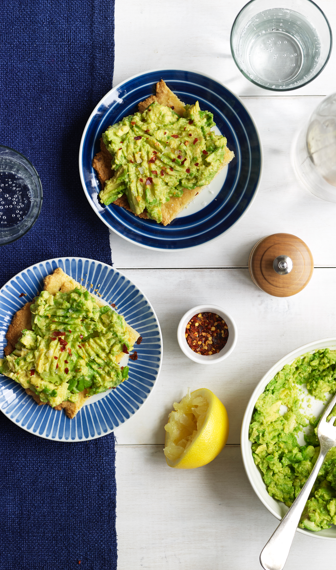Understanding Carb Overloading
Have you ever eaten a bagel or muffin for breakfast, and then felt either so ravenously hungry or lethargic by late-morning that you wolfed down a sugar-filled energy bar? Now ask yourself why anyone would want to go to the gym in that condition—you’d probably spend the whole workout feeling like you couldn’t get out of first gear. The rapid rise in blood sugar that comes from this type of high-carb load produces a very different outcome than most anticipate. It signals the body to release a big spurt of insulin, which actually lowers blood sugar and energy levels—a recipe for a mid-workout crash.
The original thinking behind carbohydrate loading was that it effectively restocked blood-sugar stores (glycogen) in the days before a major competitive event to provide long-lasting energy. But as you can see, carb loading at the wrong time (right before exercise) produces just the opposite outcome, leaving the body with less, rather than more, energy. Consistent energy is the goal, and avoiding sugar spikes and troughs is the answer!
Carb Loading Case Study
In one study, 12 normal-weight men switched from their regular diet (about 48 percent carbohydrate) to a higher protein, low-carb diet (eight percent carbohydrate) for six weeks. Another eight men stayed on the regular diet for comparison. The men were encouraged to eat plenty of calories in order to maintain their weight. At the end of the six weeks, the men who had consumed higher protein and restricted carbs had significantly decreased their body fat by an average of 7.5 pounds and significantly increased lean body mass by an average of 2.4 pounds¹.
What would have happened if those men had also stepped up their exercise regimen during that time? They likely would have seen an even greater increase in muscle-to-fat ratio, because exercise builds muscle tissue when there is adequate protein in the diet.
Carb Loading vs. Protein Consumption
Proteins, in fact, are the building blocks for muscle tissue. During exercise, the muscles are stressed—essentially causing dozens of tiny tears in the tissue. Proteins subsequently repair and rebuild this tissue, which is how your muscles maintain themselves and grow stronger. If you’re an active person, this occurs underneath your skin every day. In fact, protein actually improves sports performance. Carb loading has been the norm, but it appears that drinks or bars with a more balanced mix of protein and carbs deliver much more benefits than carbs alone. Researchers from James Madison University reported that, when compared to carbohydrate-only drinks, protein and carb mixtures increased the parameters of exercise performance, decreased muscle fatigue, improved exercise endurance (by 19 percent), decreased muscle damage (by 75 percent), and even improved muscle functioning measured 24 hours later (by 16 percent). Impressively, for NCAA Division 1 cross-country runners, a protein/carb mix reduced muscle damage by 27% and muscle soreness by 30%.
Water remains the best drink for exercise, as even a small amount of dehydration can seriously decrease performance. But all-carb beverages (or bars) don’t offer nearly the benefits that protein-carb mixes do. You can get an ideal blend of protein and carbs by either drinking an Atkins shake along with a piece of fruit like an apple, or by consuming an Atkins bar. The Peanut Fudge Granola Bar, for example, offers a terrific blend of 15 grams of protein together with 2 grams net Atkins Count on carbs, not to mention 5 grams of fiber, no trans-fats and 1 gram of sugar.
When Carbs and Exercise Go Together
There are some times when increased carb consumption does make sense and can enhance exercise performance. To get the greatest benefits from both by combining exercise and a controlled-carb eating program full of good carbs.
- During a workout of an hour or more. In contrast to research suggesting that consuming a carbohydrate snack one to two hours prior to exercise can result in lowered blood sugar levels, some carbohydrate intake can be beneficial and result in greater exercise tolerance. For those performing aerobic exercise lasting 60 minutes or more, consumption of a carbohydrate and electrolyte-replacement drink during exercise can enhance performance².
- During preparation for longer-duration exercise events such as 20-mile runs or races. One study demonstrated that individuals who normally control their carbs and then consumed a high-carbohydrate diet in the days before an event increased glycogen storage and had much higher rates of fat oxidation than individuals who regularly consume a high-carb diet³.
- When recovering post-workout. This recovery period is an important time to fit in at least a portion of your daily carb consumption to maximize muscle recovery and to aid the process of preparing for your next exercise session (carbs consumed immediately after exercise begin to replenish glycogen stores).
References Cited
1. Volek, J.S., Sharman, M.J., Love, D.M., et al., “Body Composition and Hormonal Responses to a Carbohydrate-Restricted Diet,” Metabolism, 2002, 51, pages 864–870.
2. Rowlands, D.S., Hopkins, W.G., “Effects of High-Fat and High-Carbohydrate Diets on Metabolism and Performance in Cycling,” Metabolism, 2002, 51(6), pages 678–690
3. Burke, L.M., Angus, D.J., Cox, G.R., et al., “Effect of Fat Adaptation and Carbohydrate Restoration on Metabolism and Performance During Prolonged Cycling,” Journal of Applied Physiology, 2000, 89, pages 2413–2421.


